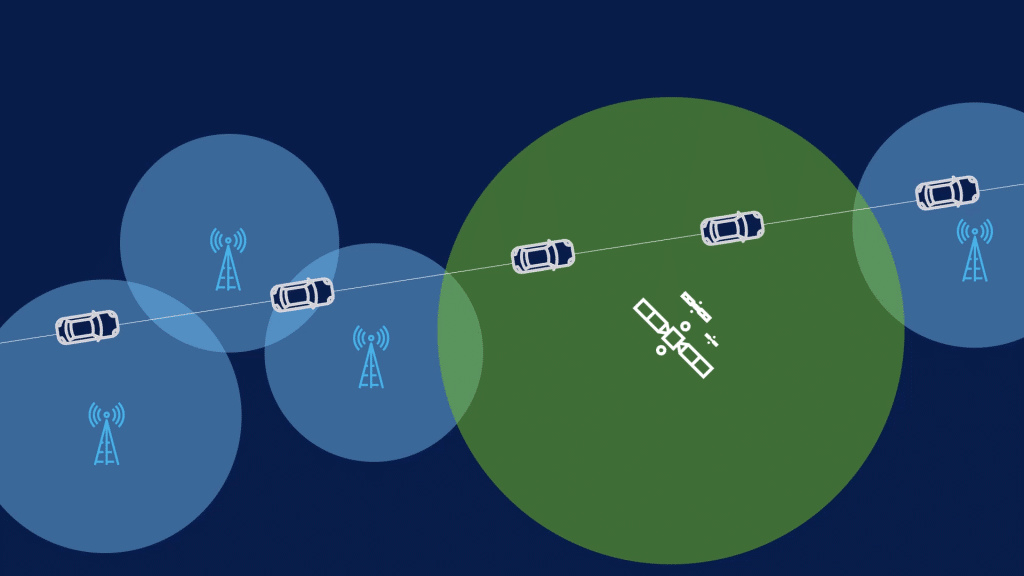Keeping First Responders Connected, No Matter When or Where
Scott Congdon, Market Development & Product Manager, Land Mobility Products
(reading time: 11 minutes)
For some years now, cloud-connected mobile applications on smartphones, tablets, and mobile data terminals (MDTs) have made it easier and safer for first responders to do their jobs in the field. Now, emergent technologies are giving enhanced powers to first responders. Artificial Intelligence (AI) is learning to see through flames and smoke to detect human beings trapped in burning buildings. Sophisticated gestural control is making autonomous machines and drones more like true extensions of human first responders. However, many of these life-saving applications and devices are cloud-dependent and rely on “always on” connectivity to function.
The increasing incidence of large disasters has made effective disaster relief and emergency response even more critical. According to the NOAA, climate change is increasing the frequency and intensity of extreme weather globally, leading to an exponential increase in “billion-dollar” climate disasters. Adjusted for inflation, there were just 31 billion-dollar disasters in the United States in the 1980s, increasing to 128 in the 2010s. We have already had 89 such disasters in the last five years, with 18 in the previous year alone.
Whether its natural disasters such as hurricanes, tornadoes or earthquakes, or man-made emergencies such as terrorism or war, terrestrial communications infrastructure may not be able to provide the high-performance connectivity first responders require to be effective. High throughput satellites (HTS) create a hybrid “network of networks” that offers affordable, redundant and seamless connectivity. Satellite connectivity can provide first responders with many benefits, from reliable and rural communications to large-scale data exchange and mobile telemedice.
Reliable Communications for Emergencies & Disasters
In the wake of a disaster, satellite connectivity can provide critical communications capabilities. In emergencies when first responders, medical personnel, fire and rescue teams, police, and other emergency responders need to coordinate their efforts and communicate with one another and headquarters in real-time, satellite can improve response times and minimize the risk of error or miscommunication.
During an emergency event, whether natural or man-made, traditional communication infrastructure may be damaged, destroyed or congested with other traffic. In these cases, portable or vehicle-mounted satellite terminals can quickly set up a mobile command center or connection to a central hub, enabling rescue teams to coordinate their efforts, communicate with emergency services, and provide updates to the public.
Rapid, Large-Scale Data Exchange for Public Safety
Satellite connectivity can enable real-time data exchange between emergency responders and other stakeholders. For example, satellite imagery and video feeds can be used to assess the extent of damage or possible threats and identify areas needing assistance. This data can be transmitted to emergency responders and other stakeholders in real-time, allowing for more effective decision-making and coordination. Satellite connectivity can also enable stakeholders to send pictures or video feeds to a central location outside of the disaster site to enable greater visibility and other analytics applications.
Rural Connectivity
Even when there isn’t an emergency or disaster, first responders may run into latency, bandwidth or reliability issues in remote areas that lack high-performance communication infrastructure. Satellite can provide coverage that cellular and fiber networks cannot, enabling critical communications and other data transfer where few other networks can reach. Reliable connectivity in rural and remote areas helps keep first responders connected and informed.
Remote Telemedicine
Satellite connectivity enables remote medical consultations and telemedicine services during an emergency or disaster, or in remote areas without other communications infrastructure. It is essential in areas where access to medical care is limited, or infrastructure has been damaged or destroyed. Satellite-enabled telemedicine platforms can be used to provide remote consultations and diagnostic services, allowing medical professionals to diagnose and treat patients in real-time using video conferencing and other telemedicine technologies.
Intelsat FlexMove Provides Reliable Satellite Connectivity for Disaster Relief and Emergency Response
According to Harbor Research, the global satellite connectivity market is expected to grow from $35 billion in 2022 to $311 billion by 2032, at a compound annual growth rate (CAGR) of 24 percent. Additionally, Harbor Research forecasts that the market for disaster relief and emergency response is expected to grow from $33 billion in 2022 to $121 billion by 2032, at a CAGR of 13.8 percent. Meanwhile, the emergency management satellite TAM reflects a $1.1 billion dollar opportunity in 2022, growing at a 13.7 percent CAGR to $8.7 billion in 2032.
Companies like Intelsat are leading the way in enabling critical, life-saving disaster relief and emergency response applications. Intelsat FlexMove network is the next-generation, multi-orbit connectivity solution designed to meet the unique needs and challenges of disaster relief and emergency response. Intelsat’s land mobile solutions enable mission-critical communications for first responders, government agencies, and broadcast teams in the field, no matter how remote or damaged the location.
Intelsat operates the world’s largest geosynchronous satellite network, merging software-defined satellite technology, multiple orbits, cloud infrastructure and terrestrial network advancements, and offering multiple layers of coverage over any region globally. These layers of coverage ensure “always on” connectivity, even in remote locations with damaged or destroyed infrastructure and for vehicles or personnel on the ground and on the move. Intelsat is also the only commercial satellite operator with third-party cybersecurity accreditation, protecting operators against cyber-attacks when they are most vulnerable.
Intelsat FlexMove is a global, secure, fully managed connectivity solution, removing the complexity of dealing with bandwidth availability, configuration and management of network infrastructure. FlexMove Communications-on-the-Move (COTM) was developed for the needs of emergency response and disaster relief, which requires temporal, mobile solutions with reliable coverage. Satellite terminals are connected to emergency response vehicles, giving them connectivity for communications, asset tracking and more.
FlexMove Communications-on-the-Pause (COTP) is a highly compact and portable satellite terminal that fits in a backpack, giving responders the ability to set up portable satellite terminals in locations far from the main site, enabling communication hubs or telemedicine tents. FlexMove COTM and COTP connectivity solutions enable real-time communication between responders in the field, search and rescue teams, and operation headquarters or hospitals.
Delivered exclusively through Intelsat’s network of highly experienced Solutions Partners, FlexMove is offered in flexible, unparalleled service agreements. FlexMove’s cost-effective, easy-to-install terminals can establish reliable connectivity in seconds, making them the preferred solution for disaster relief and emergency response worldwide.
Satellite connectivity has the potential to be a game-changer in global emergency response and disaster relief efforts, providing critical communications, data exchange, and logistical support capabilities that can save lives and minimize the impact of disasters on communities and the environment. Intelsat’s land mobile solutions, powered by its global satellite connectivity network, have the potential to revolutionize global emergency response and disaster relief efforts, providing real-time communications and data exchange capabilities that can save lives and minimize the impact of disasters on communities and the environment. Intelsat FlexMove provides the satellite connectivity needed to create a more resilient and sustainable world that is better equipped to respond to the challenges of the future.
Learn more at https://www.intelsat.com/land-mobility/.






















